Maat – Ancient Egypt’s Most Important Religious Concept
A. Sutherland - AncientPages.com - Maat represented the most essential religious concept of the Egyptian view of the world. It was a concept of order of the world that the gods, pharaohs, and ordinary people had to obey.
Maat wearing the feather of truth. Image credit: Lunazagor - Public Domain
Maat was the Harmony or Law of the Universe. The lack of Maat and her departure meant an inevitable return to the original chaos (Nu) and the end of the known world.
Goddess Maat Was A Symbol Of Balance, Truth, Justice And Wisdom
Like many Egyptian deities with a human form, Maat was an abstract goddess of great symbolic importance. For example, Maat was responsible for the balance between the gods and people and between the two sexes.
As previously noted in Ancient Pages, the equal rights enjoyed by both men and women in ancient Egypt can be attributed to Egyptian cosmology and the Goddess Maat.
Ancient Egyptians viewed the Universe as a complete duality of male and female. A mutual relationship between gods and goddesses existed when the Universe was born. We wrote in our earlier article that female gods were just as important as male gods.
Egyptian goddess Maat Ma'at (Mayet) also symbolized wisdom, truth, and justice. Maat gods were considered judges or other essential state officials representing the laws of being, truth, and universal order.
However, the highest priest was always the Pharaoh himself.
Depictions of Maat as a goddess began to appear as early as the middle of the Old Kingdom (c. 2680 to 2190 BC) and showed Maat as a woman sitting or standing and holding the scepter in one hand and the ankh in the other. An ostrich feather (her emblem) often decorated the goddess's head. This feather's meaning was probably "lightness and good deeds."
Demon Ammit And The "Weighing Of The Heart" Ceremony
The heart of Hunefer weighed against the feather of Maat. This is an excellent example of one of the many fine vignettes (illustrations) from the Book of the Dead of Hunefer. Image source - British Museum - Public Domain
In the beliefs of the ancient Egyptians, this feather played an essential role during the final judgment. People believed that before entering the afterlife, the deceased were expected to deny all the evil deeds they might have committed in their lifetime.
So, they appeared before the goddess of truth, Maat, to go through this confrontation.
During the "Weighing of the Heart" ceremony, the feather's lightweight was used as a counterweight to the human heart, which was believed to be - the cornerstone of the soul.
Ammit ("Eater of Hearts") was a female demon and goddess with a body that was a combination of lion and hippopotamus, and her head was that of a crocodile. Ammit, who resided in the Hall of Ma'at, always awaited the ceremony's end and judgment for the departed and deceased souls. If the heart was heavier than the feather, this person's number of evil deeds was too big, and Ammit would consume the soul (Ba).
However, if the heart was lighter than the feather of Maat, or its weight was equal, the soul could live on in the afterlife, help Osiris, the god of the afterlife, in judgment, associate with other souls, or even return to earth periodically to visit some places the person had loved in life.
Some of the 42 Judges of Maat are visible, seated and in small size. Maat's feather of truth depicted in the bottom right corner. British Museum, London. Image credit: Soutekh67 - CC BY-SA 3.0
The Pharaoh Was Responsible For Maintenance Of The Maat System
The cult of the goddess Maat has been known practically since the beginning of the Egyptian religion. It was connected with the norms and laws of Egyptian society and regulated the relationship between Pharaoh and his people.
The most important task of the pharaohs was to maintain the world's order, and a special ritual was performed in all temples to honor Maat.
The Pharaoh was responsible for guaranteeing the world order, establishing rights, and caring for the country and its people. In a way, the Pharaoh symbolized the maintenance of the Maat system, which sometimes was seriously threatened.
In 1650 B.C., Egypt was invaded by a group of foreigners who called themselves Hyksos. As we wrote in one of our articles on Ancient Pages, the Hyksos people established a mighty empire in large parts of ancient Egypt. This Hyksos Empire lasted over 100 years and seriously disturbed the Maat order.
Finally, the pharaoh Kamose, the last king of the Theban Seventeenth Dynasty, liberated the country from the Hyksos. Then, it was publicly announced that the goddess Maat had returned, and the world was no longer in danger.
It is worth noting that according to these ancient Egyptian beliefs, every wicked act and each misuse of the world's order could permanently corrupt the Maat.
The Maat system became vulnerable, which, in consequence, could lead to the end of the world much sooner.
As we mentioned in another of our articles, it is also interesting to note that the Ten Commandments are very similar to the 42 Principles of Maat that appeared at least 2,000 earlier. There is reason to seriously consider at least 8 of the Christian Ten Commandments were based on Ma'at (or Maat), an ancient ethical and moral principle that every Egyptian citizen was expected to follow throughout their daily lives.
Written by – A. Sutherland AncientPages.com Staff Writer
Updated on February 25, 2024
Copyright © AncientPages.com All rights reserved. This material may not be published, broadcast, rewritten or redistributed in whole or part without the express written permission of AncientPages.com
More From Ancient Pages
-
 Was Princess Tadukhipa Of The Mitanni Kingdom Queen Nefertiti?
Civilizations | Mar 15, 2016
Was Princess Tadukhipa Of The Mitanni Kingdom Queen Nefertiti?
Civilizations | Mar 15, 2016 -
 Bjorn Ironside: Famous Viking Who Captured Luna By Mistake Instead Of Ancient Rome As Planned
Featured Stories | Jun 11, 2016
Bjorn Ironside: Famous Viking Who Captured Luna By Mistake Instead Of Ancient Rome As Planned
Featured Stories | Jun 11, 2016 -
 Killer-Of-Enemies – Mysterious Non-Human Teacher And Hero Of The Apache Indians
Featured Stories | Nov 16, 2020
Killer-Of-Enemies – Mysterious Non-Human Teacher And Hero Of The Apache Indians
Featured Stories | Nov 16, 2020 -
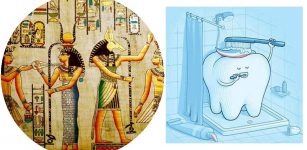 Ancient Egyptians Invented Toothpaste
Ancient Technology | Dec 26, 2015
Ancient Egyptians Invented Toothpaste
Ancient Technology | Dec 26, 2015 -
 Beware Of The Shapeshifting Gaelic Bodach Who May Be Difficult To Trick
Christmas Traditions | Dec 3, 2021
Beware Of The Shapeshifting Gaelic Bodach Who May Be Difficult To Trick
Christmas Traditions | Dec 3, 2021 -
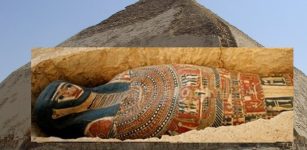 Egypt Opens Two Ancient Pyramids And Unveils Newly Found Sarcophagi And Mummies
Archaeology | Jul 15, 2019
Egypt Opens Two Ancient Pyramids And Unveils Newly Found Sarcophagi And Mummies
Archaeology | Jul 15, 2019 -
 Stolen Artifacts Returned To Pompeii – Believed To Be Cursed -They Brought Misfortunes To A Woman And Her Family
Artifacts | Oct 13, 2020
Stolen Artifacts Returned To Pompeii – Believed To Be Cursed -They Brought Misfortunes To A Woman And Her Family
Artifacts | Oct 13, 2020 -
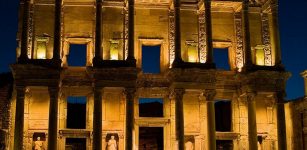 City Of Ephesus And Celsus Library With More Than 12,000 Scrolls
Featured Stories | Sep 17, 2015
City Of Ephesus And Celsus Library With More Than 12,000 Scrolls
Featured Stories | Sep 17, 2015 -
 Ezekiel’s Secret Ancient Knowledge About Lost Worlds – Thought-Provoking Theory Examined
Featured Stories | May 3, 2019
Ezekiel’s Secret Ancient Knowledge About Lost Worlds – Thought-Provoking Theory Examined
Featured Stories | May 3, 2019 -
 Hyperborea Or Atlantis Ruins – Underground Secrets Of The Sacred Lake On The Arctic Circle
Civilizations | Nov 17, 2014
Hyperborea Or Atlantis Ruins – Underground Secrets Of The Sacred Lake On The Arctic Circle
Civilizations | Nov 17, 2014 -
 6,000 Years Ago, Europe’s Oldest Cities Relied On Fertilizer And Plant Protein, Isotope – Analysis Shows
Archaeology | Dec 19, 2023
6,000 Years Ago, Europe’s Oldest Cities Relied On Fertilizer And Plant Protein, Isotope – Analysis Shows
Archaeology | Dec 19, 2023 -
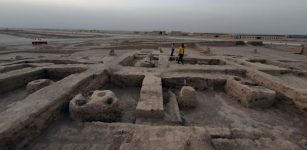 Ancient Parthian City With Hundreds Of Artifacts Unearthed In Iraq
Archaeology | Aug 16, 2022
Ancient Parthian City With Hundreds Of Artifacts Unearthed In Iraq
Archaeology | Aug 16, 2022 -
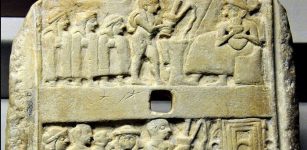 Ur – One Of The Largest And Most Important Cities Of Ancient Mesopotamia
Featured Stories | Jul 28, 2021
Ur – One Of The Largest And Most Important Cities Of Ancient Mesopotamia
Featured Stories | Jul 28, 2021 -
 Artifacts And Long History Of Unguja Island – Ancient Humans Impact Island’s Environment
Archaeology | Mar 5, 2022
Artifacts And Long History Of Unguja Island – Ancient Humans Impact Island’s Environment
Archaeology | Mar 5, 2022 -
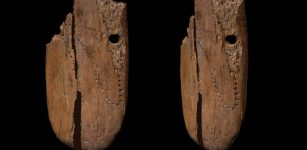 41,500-Year-Old Ivory Pendant Is The Oldest Evidence Of Humans Decorating Jewelery In Eurasia
Archaeology | Nov 26, 2021
41,500-Year-Old Ivory Pendant Is The Oldest Evidence Of Humans Decorating Jewelery In Eurasia
Archaeology | Nov 26, 2021 -
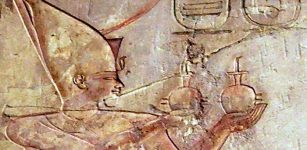 Newly Unearthed Colossal Statue Probably Depicts King Psammetich I And Not Ramses II
Archaeology | Mar 17, 2017
Newly Unearthed Colossal Statue Probably Depicts King Psammetich I And Not Ramses II
Archaeology | Mar 17, 2017 -
 Unexpected Underwater Discovery Of 50,000 Ancient Coins Off Sardinia Hints At Hidden Shipwreck
Archaeology | Nov 10, 2023
Unexpected Underwater Discovery Of 50,000 Ancient Coins Off Sardinia Hints At Hidden Shipwreck
Archaeology | Nov 10, 2023 -
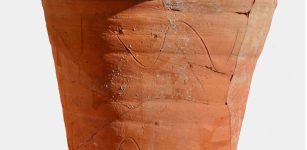 Ancient Roman Portable Toilets Studied By Scientists
Archaeology | Feb 11, 2022
Ancient Roman Portable Toilets Studied By Scientists
Archaeology | Feb 11, 2022 -
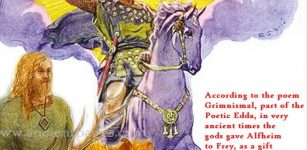 Frey – Handsome Vanir God Of Fertility And Lord Of The Elves In Norse Beliefs
Featured Stories | Mar 3, 2018
Frey – Handsome Vanir God Of Fertility And Lord Of The Elves In Norse Beliefs
Featured Stories | Mar 3, 2018 -
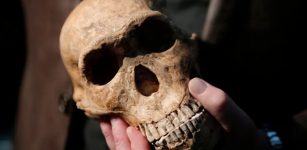 Surprising Evolution Discovery – Extinct Subterranean Human Species With Tiny Brains Used Fire
Archaeology | Dec 9, 2022
Surprising Evolution Discovery – Extinct Subterranean Human Species With Tiny Brains Used Fire
Archaeology | Dec 9, 2022



